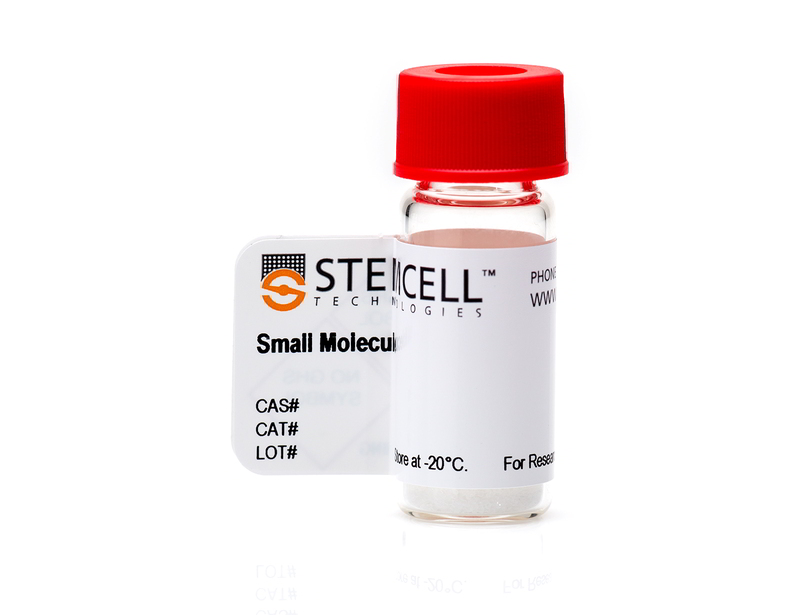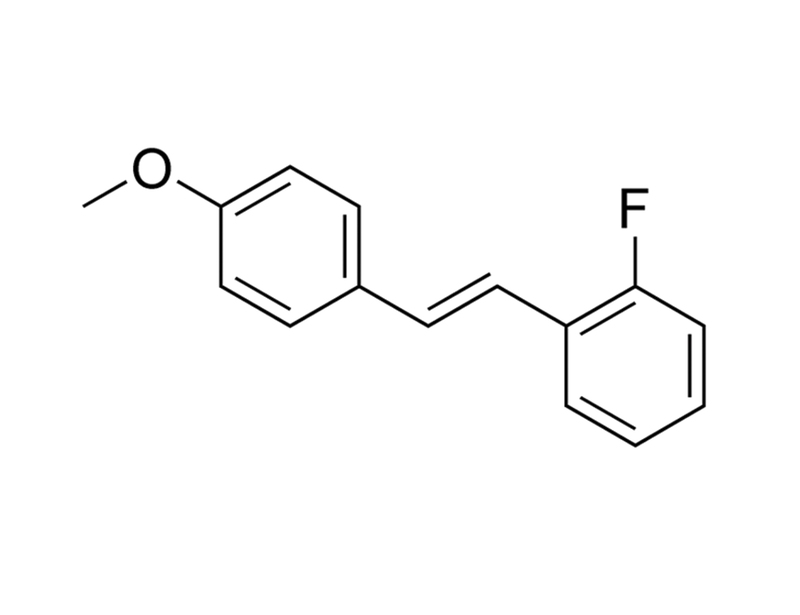概要
CAY10512 is an analog of Resveratrol that is 100-fold more potent (IC₅₀ = 150 nM) at inhibiting NF-κB activation by TNF-α (Heynekamp et al.). Unlike Resveratrol and some other trans-stilbene analogs, CAY10512 does not exhibit antioxidant activity (up to 15 μM) in either the ferric reducing/antioxidant power (FRAP) or total radical antioxidant parameter (TRAP) assays (Heynekamp et al.). Like Resveratrol, CAY10512 also inhibits lipopolysaccharide-induced expression of COX-2 (Heynekamp et al.).
IMMUNOLOGY
· Protects human islets from instant blood-mediated inflammatory response leading to improved survival of transplanted islets in in vitro tube model (Kanak et al.).
DISEASE MODELING
· Inhibits induction of NF-κB and subsequent upregulation of inflammatory microRNAs in Alzheimer disease model of human neuronal-glial cells in vitro (Lukiw).
IMMUNOLOGY
· Protects human islets from instant blood-mediated inflammatory response leading to improved survival of transplanted islets in in vitro tube model (Kanak et al.).
DISEASE MODELING
· Inhibits induction of NF-κB and subsequent upregulation of inflammatory microRNAs in Alzheimer disease model of human neuronal-glial cells in vitro (Lukiw).
技术资料
| Document Type | 产品名称 | Catalog # | Lot # | 语言 |
|---|---|---|---|---|
| Product Information Sheet | CAY10512 | 73022 | All | English |
| Safety Data Sheet | CAY10512 | 73022 | All | English |
数据及文献
Publications (3)
Transplantation 2014
Alleviation of instant blood-mediated inflammatory reaction in autologous conditions through treatment of human islets with NF-κB inhibitors.
Abstract
Abstract
BACKGROUND: The instant blood-mediated inflammatory response (IBMIR) has been shown as a major factor that causes damage to transplanted islets. Withaferin A (WA), an inhibitor of nuclear factor (NF) κB, was shown to suppress the inflammatory response in islets and improve syngeneic islet graft survival in mice. We investigated how treating islets with NF-κB inhibitors affected IBMIR using an in vitro human autologous blood islet model. METHODS: Human islets were pretreated with or without NF-κB inhibitors WA or CAY10512 before mixing autologous blood in a miniaturized in vitro tube model. Plasma samples were collected at multiple time points and used for the measurement of C-peptide, proinsulin, thrombin-antithrombin (TAT) complex, and a panel of proinflammatory cytokines. Infiltration of neutrophils into islets was analyzed using immunohistochemistry. RESULTS: Rapid release of C-peptide and proinsulin was observed 3 hr after mixing islets and blood in the control group, but not in the NF-κB inhibitor-treated groups, whereas TAT levels were elevated in all three groups with a peak at 6 hr. Significant elevation of proinflammatory cytokines was observed in the control group after 3 hr, but not in the treatment groups. Significant inhibition of neutrophil infiltration was also observed in the WA group compared with the control (Ptextless0.001) and CAY10512 (Ptextless0.001) groups. CONCLUSIONS: A miniaturized in vitro tube model can be useful in investigating IBMIR. The presence of NF-κB inhibitor could alleviate IBMIR, thus improving the survival of transplanted islets. Protection of islets in the peritransplant phase may improve long-term graft outcomes.
Experimental neurology 2012
NF-кB-regulated micro RNAs (miRNAs) in primary human brain cells.
Abstract
Abstract
Micro RNAs (miRNAs), small and labile ˜22 nucleotide-sized fragments of single stranded RNA, are important regulators of messenger (mRNA) complexity and in shaping the transcriptome of a cell. In this communication, we utilized amyloid beta 42 (Aβ42) peptides and interleukin-1beta (IL-1β) as a combinatorial, physiologically-relevant stress to induce miRNAs in human primary neural (HNG) cells (a co-culture of neurons and astroglia). Specific miRNA up-regulation was monitored using miRNA arrays, Northern micro-dot blots and RT-PCR. Selective NF-кB translocation and DNA binding inhibitors, including the chelator and anti-oxidant pyrollidine dithiocarbamate (PDTC) and the polyphenolic resveratrol analog CAY10512 (trans-3,5,4'-trihydroxystilbene), indicated the NF-кB sensitivity of several brain miRNAs, including miRNA-9, miRNA-125b and miRNA-146a. The inducible miRNA-125b and miRNA-146a, and their verified mRNA targets, including 15-lipoxygenase (15-LOX), synapsin-2 (SYN-2), complement factor H (CFH) and tetraspanin-12 (TSPAN12), suggests complex and highly interactive roles for NF-кB, miRNA-125b and miRNA-146a. These data further indicate that just two NF-кB-mediated miRNAs have tremendous potential to contribute to the regulation of neurotrophic support, synaptogenesis, neuroinflammation, innate immune signaling and amyloidogenesis in stressed primary neural cells of the human brain.
Journal of medicinal chemistry 2006
Substituted trans-stilbenes, including analogues of the natural product resveratrol, inhibit the human tumor necrosis factor alpha-induced activation of transcription factor nuclear factor kappaB.
Abstract
Abstract
The transcription factor nuclear factor kappaB (NF-kappaB), which regulates expression of numerous antiinflammatory genes as well as genes that promote development of the prosurvival, antiapoptotic state is up-regulated in many cancer cells. The natural product resveratrol, a polyphenolic trans-stilbene, has numerous biological activities and is a known inhibitor of activation of NF-kappaB, which may account for some of its biological activities. Resveratrol exhibits activity against a wide variety of cancer cells and has demonstrated activity as a cancer chemopreventive against all stages, i.e., initiation, promotion, and progression. The biological activities of resveratrol are often ascribed to its antioxidant activity. Both antioxidant activity and biological activities of analogues of resveratrol depend upon the number and location of the hydroxy groups. In the present study, phenolic analogues of resveratrol and a series of substituted trans-stilbenes without hydroxy groups were compared with resveratrol for their abilities to inhibit the human tumor necrosis factor alpha-induced (TNF-alpha) activation of NF-kappaB, using the Panomics NF-kappaB stable reporter cell line 293/NF-kappaB-luc. A series of 75 compounds was screened to identify substituted trans-stilbenes that were more active than resveratrol. Dose-response studies of the most active compounds were carried out to obtain IC50 values. Numerous compounds were identified that were more active than resveratrol, including compounds that were devoid of hydroxy groups and were 100-fold more potent than resveratrol. The substituted trans-stilbenes that were potent inhibitors of the activation of NFkappaB generally did not exhibit antioxidant activity. The results from screening were confirmed using BV-2 microglial cells where resveratrol and analogues were shown to inhibit LPS-induced COX-2 expression.

 网站首页
网站首页




